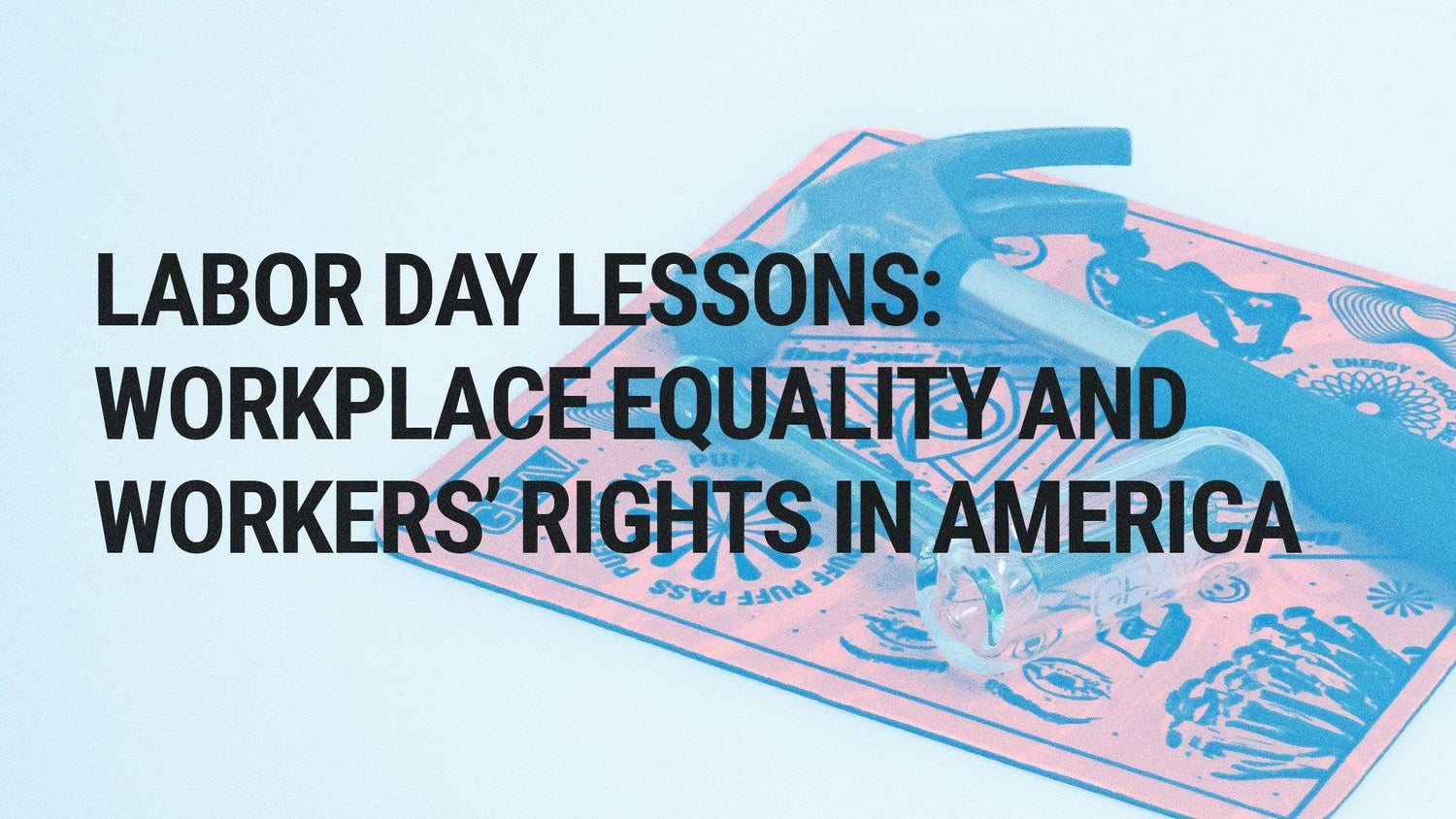
Labor Happened So We Could Smoke Weed on The Weekend
Since 1894, Americans have celebrated a national Labor Day holiday with cookouts and pool parties. While we look forward to the three-day weekend each September, Labor Day is also an excellent opportunity to look at the true state of labor in the United States.
So before you break out the burgers and pack your Labor Day bowl, let’s talk workers rights, workplace inequality, and wage theft. It’s gonna be fun.
The Origins of Labor Day
The first Labor Day was celebrated in New York City in 1882. Back then, workers could work twelve hours a day, seven days a week. Young children worked in harsh factory conditions. Equipment was dangerous, and it wasn’t uncommon to be maimed or even killed on the job.
In this environment, 10,000 New Yorkers paraded down the streets in a one day strike—the first ever Labor Day celebration. With the labor movement gaining momentum, states began to adopt a formal day of worker recognition. First New York, then Oregon. By 1894, 23 states had adopted their own Labor Day holidays. Congress followed suit that year, enacting a national recognition of labor on the first Monday of each September.
The Department of Labor website has lofty things to say about our national labor force, asserting that it has “raised the nation’s standard of living and contributed to the greatest production the world has ever known…It is appropriate, therefore, that the nation pays tribute on Labor Day to the creator of so much of the nation's strength, freedom, and leadership – the American worker.”
But what we say about the American worker doesn’t always line up with how we treat the American worker.
 The GRAV Hammer Bubbler in green.
The GRAV Hammer Bubbler in green.
The Struggle for Workers’ Rights
Today, certain labor laws seem like common sense. Mandated breaks. A federal (and state) minimum wage. OSHA safety standards. Strong limits on child labor. An eight-hour work day, at least in some industries.
Not one of those regulations was in place until workers fought for them. Capitalism—hate it, love it, or have weird, complicated feelings about it—does not incentivize employers to give breaks, pay a living wage, or keep eight-year-olds out of factories. And those at the top will do everything they can to keep the worker where they are—productive and cheap.
The ruling class says things like: “There is no break in the chain of cause and effect: increased hourly wages, increased cost per unit of product, a higher selling price, a falling off in demand, decreased production, and decreased employment.”
Any guesses where that quote came from? The CEO of McDonald’s? Home Depot? Wal-Mart? No, that was J.D. Battle of the National Coal Association back in 1937, fighting against the Fair Labor Standards Act which established a minimum wage, a maximum workweek, and limited. child labor in dangerous environments. It’s rhetoric we’d hear again and again in the subsequent 86 years, every time legislation for better pay and working conditions was considered.
Notably, the FLSA excludes paid caregivers, agricultural workers, and seasonal workers. Gee, I wonder what demographics those workers tend to come from? You got it—women and people of color.
It’s the workers themselves who had to (and still have to) fight for these protections with the only tool they have: their productivity. The fight is a constant one. Yes, workers won a federal minimum wage. But today, that wage is a paltry $7.25 per hour, where it’s been stuck since July 2009. If it had kept pace with productivity since 1968, it would be $23 per hour. According to MIT’s Living Wage Calculator, a single parent with two kids would have to work 252 hours at $7.25/hour to keep afloat.
Beyond federal protections, some industries also have unions that represent the workers and enter collective bargaining with employers. And when the employers won’t meet them in good faith, a strike can be the only way to move forward. Just look at SAG-AFTRA and the Writers Guild of America, currently on strike for protections from AI and a more fair distribution of streaming residuals.

Wage Disparities and Wage Theft
Before the Equal Pay Act of 1963, it was legal to pay women less than men for the same work. But despite improvements over the years, wage disparities persist. As groups, women, racial minorities, and LGBTQ+ workers all earn less than their white male counterparts. Even for the same roles. Even when working full time, year round.
Women earn 84 cents for each dollar a man earns in the same position. For Black women, it’s 67 cents. For Hispanic and Native American women, it’s 57 cents. Mothers earn 74 cents for every dollar fathers earn—even when working full time, year round. Transgender women earn 60 cents for every dollar of the average American worker.
In 2020, the average full-time Black worker made 23% less than the average full-time white worker. And full-time Hispanic workers made 32% less than full-time white workers.
There are other wage irregularities too, beyond pay inequality. Wage theft could account for up to $50 BILLION in lost income each year, according to the Economic Policy Institute. Theft can include forcing employees to work off the clock, not paying overtime, and refusing to pay what was agreed. All easy to do, especially with a vulnerable workforce that can’t afford to complain.
What can you do about it all? If you’re at the top of the wage scale, you can advocate for your coworkers. Despite what your employer may claim, employees have the right to discuss their pay with their colleagues under the National Labor Relations Act. There is some fine print: head here for further details. If you suspect a coworker is being underpaid, go to bat for them!
Supporting Ethical Brands Can Help Make a Difference
I know—you just wanted to have a nice day off, and I’m bumming you out. And what are you supposed to do about it?
These are systemic issues, and an individual approach can only go so far. Plus, in a global economy, it’s incredibly difficult to support brands that treat their workers fairly. From apples to light bulbs to toothpaste, we’re buying things every day. How much do we know about the conditions of the workers that made them?
But when we do have the option, we can choose to support brands that value good working conditions, reasonable hours, and fair pay. At GRAV®, we work hard to create a comfortable working environment, whether that’s in our offices, our warehouse, or for our remote employees. We offer unlimited paid time off, and yes—we encourage people to use it. And we pay a living wage to all.
So now that you’ve done your homework, you’re free to smoke up and enjoy your holiday.
Happy Labor Day, from your fellow workers at GRAV®.













